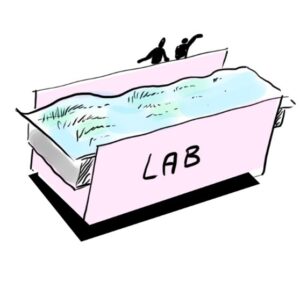Work Package 5 “Labs”
WP5. Laboratory equipment for process studies
Responsible partner: UU (Prof. dr. M.G. Kleinhans)
The Δ-ENIGMA field facilities will provide data on time/space variations of sediments and sediment transport processes. The scientific objective behind the collection of these high-resolution data is to improve the modelling and predictive power of delta development in times of change. An essential step here is linking observed patterns in the field with concepts and knowledge translated into functional relations used in modelling. As an intermediate step in this translation, experimental approaches, in which single factors are varied and their influence on sediment dynamics precisely determined, are indispensable. While the partners in this proposal all have existing laboratory facilities that are intensively used for this type of studies, these facilities are isolated and not sufficiently connected, which limits their impact. Within Δ-ENIGMA, we will push these facilities to the next level and establish a truly national infrastructure. By making selective investments in the equipment base of the existing facilities, they will be made more congruent in the data they deliver.
Investments will be made in:
- Facilities for sediment tracing:
- Sediment tracing by luminescence (WUR). Extending current methods with new promising developments based on the detection of feldspar infrared photo-stimulated luminescence signals (IRPL).
- Sediment tracing by geochemistry (UU).
- Sediment tracing by grain size analysis (TUD) using Camsizers and optical grain microscopy.
- Flume facilities for sediment transport and biogeomorphology studies. Upgrades and new investments:
- Current Flume (WUR) for analysis of sediment transport in rivers, with acoustic velocity profilers and a Particle Image Velocimetry (PIV).
- Wave Flume (TUD), to study sediment transport under wave processes with weak currents, now with a true sediment floor.
- Wind tunnel (UT) to investigate the role of variable soil-moisture levels on the initiation of sand transport.
- BioLiveFlume (NIOZ) to study living biota under different salinities and wave-flow conditions.
- Metronome (UU) for experiments on systemic effects of physical and biological processes and their boundary conditions (including subsidence) on the development of entire estuaries.
- Global change mesocosms for intertidal estuarine conditions, and for dune vegetation.

